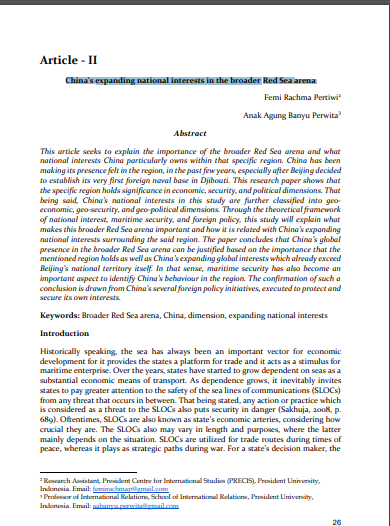China’s expanding national interests in the broader Red Sea arena
DOI:
https://doi.org/10.54945/jjia.v2i4.52Abstract
This article seeks to explain the importance of the broader Red Sea arena and what national interests China particularly owns within that specific region. China has been making its presence felt in the region, in the past few years, especially after Beijing decided to establish its very first foreign naval base in Djibouti. This research paper shows that the specific region holds significance in economic, security, and political dimensions. That being said, China’s national interests in this study are further classified into geoeconomic, geo-security, and geo-political dimensions. Through the theoretical framework of national interest, maritime security, and foreign policy, this study will explain what makes this broader Red Sea arena important and how it is related with China’s expanding national interests surrounding the said region. The paper concludes that China’s global presence in the broader Red Sea arena can be justified based on the importance that the mentioned region holds as well as China’s expanding global interests which already exceed Beijing’s national territory itself. In that sense, maritime security has also become an important aspect to identify China’s behaviour in the region. The confirmation of such a conclusion is drawn from China’s several foreign policy initiatives, executed to protect and secure its own interests.







